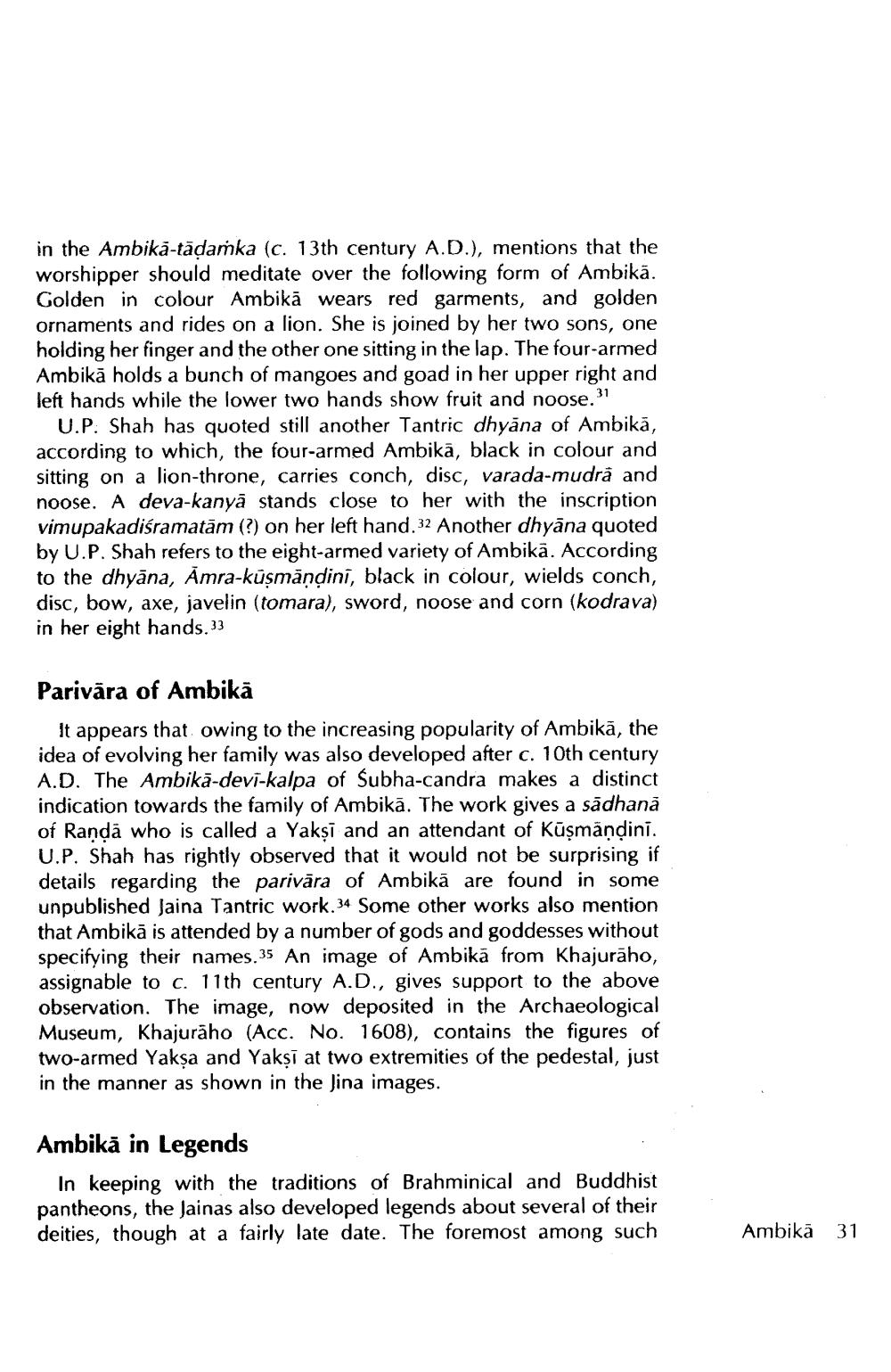________________
in the Ambika-tāḍamka (c. 13th century A.D.), mentions that the worshipper should meditate over the following form of Ambikā. Golden in colour Ambika wears red garments, and golden ornaments and rides on a lion. She is joined by her two sons, one holding her finger and the other one sitting in the lap. The four-armed Ambika holds a bunch of mangoes and goad in her upper right and left hands while the lower two hands show fruit and noose.31
U.P. Shah has quoted still another Tantric dhyāna of Ambikā, according to which, the four-armed Ambika, black in colour and sitting on a lion-throne, carries conch, disc, varada-mudra and noose. A deva-kanya stands close to her with the inscription vimupakadiśramatām (?) on her left hand. 32 Another dhyana quoted by U.P. Shah refers to the eight-armed variety of Ambika. According to the dhyāna, Amra-küṣmaṇḍini, black in colour, wields conch, disc, bow, axe, javelin (tomara), sword, noose and corn (kodrava) in her eight hands. 33
Parivära of Ambika
It appears that owing to the increasing popularity of Ambika, the idea of evolving her family was also developed after c. 10th century A.D. The Ambika-devi-kalpa of Subha-candra makes a distinct indication towards the family of Ambikā. The work gives a sadhana of Raṇḍā who is called a Yakṣi and an attendant of Kūsmāṇḍini. U.P. Shah has rightly observed that it would not be surprising if details regarding the parivara of Ambika are found in some unpublished Jaina Tantric work. 34 Some other works also mention that Ambika is attended by a number of gods and goddesses without specifying their names.35 An image of Ambika from Khajuraho, assignable to c. 11th century A.D., gives support to the above observation. The image, now deposited in the Archaeological Museum, Khajuraho (Acc. No. 1608), contains the figures of two-armed Yakṣa and Yakṣi at two extremities of the pedestal, just in the manner as shown in the Jina images.
Ambika in Legends
In keeping with the traditions of Brahminical and Buddhist pantheons, the Jainas also developed legends about several of their deities, though at a fairly late date. The foremost among such
Ambika
31




